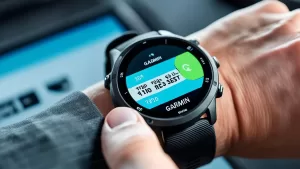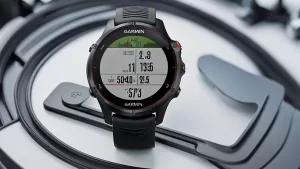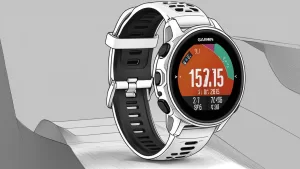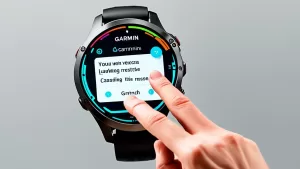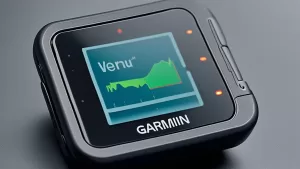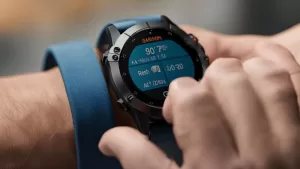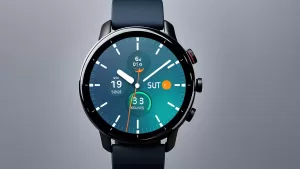Are you frustrated with the inaccurate heart rate monitoring on your Samsung Galaxy Watch 4 Classic? It’s essential to have reliable data when tracking your fitness progress and monitoring your overall health. So, what can you do to improve the accuracy of this crucial feature on your smartwatch?
In this article, we will guide you through troubleshooting steps and provide valuable tips to ensure accurate heart rate monitoring on your Samsung Galaxy Watch 4 Classic. Discover how you can make the most out of the heart rate sensor on your Samsung wearable technology, and take control of your health tracking.
Key Takeaways:
- Troubleshoot and improve the accuracy of the heart rate monitoring on your Samsung Galaxy Watch 4 Classic
- Follow tips for proper heart rate monitoring to achieve accurate results
- Enable continuous heart rate monitoring for real-time tracking
- Troubleshoot common heart rate monitoring issues and resolve them
- Learn how to manually measure your heart rate using the Samsung Health app
Tips for Proper Heart Rate Monitoring on the Samsung Galaxy Watch 4 Classic
When it comes to tracking your heart rate on the Samsung Galaxy Watch 4 Classic, accuracy is key. Whether you’re monitoring your fitness progress or keeping an eye on your overall health, here are some tips to ensure accurate heart rate monitoring:
1. Wear your watch correctly
Make sure you’re wearing your Samsung Galaxy Watch 4 Classic snugly on your wrist, just above the bone. A loose or tight fit can affect the accuracy of the heart rate sensor.
2. Keep your wrist clean
Clean your wrist before putting on the watch, as dirt, sweat, or lotion can interfere with the heart rate sensor’s performance. Also, ensure the sensors on the back of the watch are free from any debris.
3. Avoid excessive movement
During heart rate monitoring, try to keep your wrist and arm as still as possible. Excessive movement may disrupt the sensor’s reading and result in inaccurate heart rate measurements.
4. Find the right location on your wrist
Experiment with different positions on your wrist to find the spot where the heart rate sensor works best for you. It may vary depending on your individual anatomy.
5. Update your software
Make sure your Samsung Galaxy Watch 4 Classic has the latest software updates installed. These updates often include improvements and bug fixes that can enhance heart rate monitoring accuracy.
6. Restart your watch
If you’re experiencing persistent inaccuracies, try restarting your Samsung Galaxy Watch 4 Classic. This can refresh the system and potentially resolve any temporary issues.
By following these tips, you can optimize the heart rate monitoring feature on your Samsung Galaxy Watch 4 Classic and ensure more accurate results. Remember, accurate heart rate monitoring is essential for tracking your health and fitness goals effectively.
Continuous Heart Rate Monitoring on the Samsung Galaxy Watch 4 Classic
The Samsung Galaxy Watch 4 Classic offers the option for continuous heart rate monitoring, allowing you to accurately track your heart rate throughout the day. With this feature enabled, you can gain valuable insights into your cardiovascular health and monitor your heart rate trends over time. To enable continuous heart rate monitoring on your Samsung Galaxy Watch 4 Classic, follow these simple steps:
Step 1: Access the Samsung Health App
To begin, open the Samsung Health app on your Galaxy Watch 4 Classic. This app serves as your hub for various health and fitness features, including heart rate monitoring.
Step 2: Navigate to Heart Rate Settings
Within the Samsung Health app, locate and select the “Heart Rate” option. This will take you to the heart rate settings page, where you can customize and configure the heart rate monitoring feature.
Step 3: Enable Continuous Heart Rate Monitoring
On the heart rate settings page, look for the option to enable continuous heart rate monitoring. Toggle the switch to the “On” position to activate this feature.
Step 4: Adjust Heart Rate Alert Settings (Optional)
If desired, you can also customize the heart rate alert settings to receive notifications when your heart rate exceeds a certain threshold. This can be useful for monitoring intense physical activity or potential heart rate irregularities. Adjust the alert settings according to your preferences.
Once you have completed these steps, your Samsung Galaxy Watch 4 Classic will continuously monitor your heart rate, providing accurate and real-time data throughout the day. You can easily view your heart rate trends and data within the Samsung Health app or the heart rate widget on your watch’s display.
By utilizing the continuous heart rate monitoring feature, you can stay informed about your heart health and make more informed decisions regarding your fitness routine. Whether you are engaging in vigorous workouts or simply going about your daily activities, the Samsung Galaxy Watch 4 Classic ensures accurate and reliable heart rate monitoring.
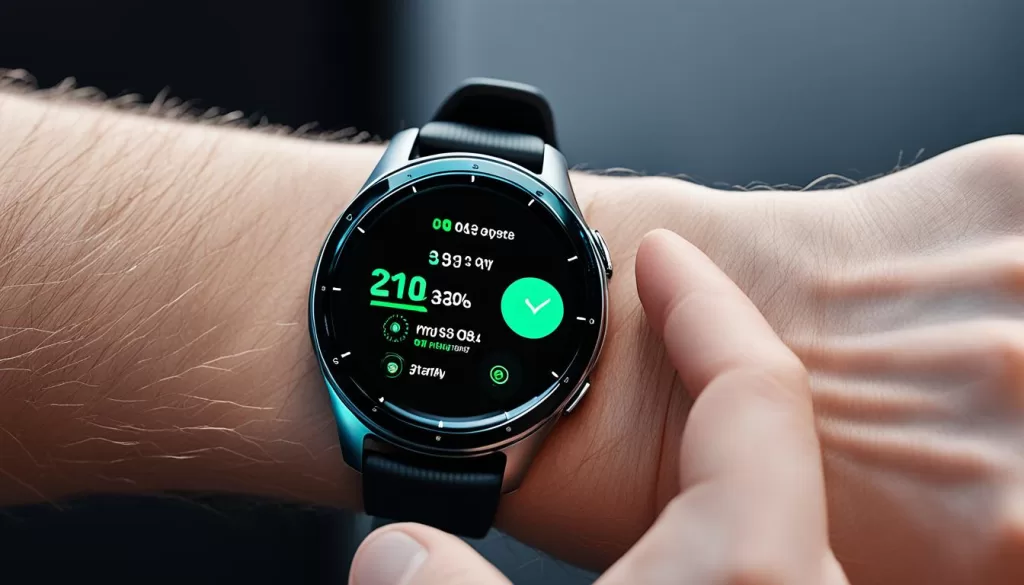
Troubleshooting Heart Rate Monitoring Issues on the Samsung Galaxy Watch 4 Classic
If you are still experiencing issues with heart rate monitoring on your Samsung Galaxy Watch 4 Classic, there are several troubleshooting steps you can take to resolve the problem.
1. Restarting the Watch
A simple restart can often fix minor software glitches that may be affecting the accuracy of the heart rate monitoring feature. To restart your Samsung Galaxy Watch 4 Classic, follow these steps:
- Press and hold the Watch’s power button.
- Select “Restart” from the menu that appears.
- Wait for the watch to restart and then check if the heart rate monitoring is functioning properly.
2. Fit of the Watch
Ensure that the Samsung Galaxy Watch 4 Classic is securely fastened to your wrist. If the watch is too loose or too tight, it may affect the accuracy of the heart rate monitoring. Adjust the strap or band to achieve a comfortable and snug fit.
3. Cleaning the Sensors
Over time, the sensors on the back of the watch that measure heart rate can accumulate dirt, oils, or sweat, leading to inaccurate readings. Clean the sensors regularly using a soft, lint-free cloth lightly dampened with water. Gently wipe the sensors to remove any debris or buildup and ensure optimal contact with your skin.
4. Software Updates
Make sure that your Samsung Galaxy Watch 4 Classic has the latest software updates installed. Manufacturers often release updates that address performance issues, including those related to heart rate monitoring accuracy. To check for updates:
- Open the Galaxy Wearable app on your connected smartphone.
- Navigate to the “About Watch” or “Software Update” section.
- Follow the on-screen instructions to download and install any available updates.
By following these troubleshooting steps, you can improve the accuracy of the heart rate monitoring feature on your Samsung Galaxy Watch 4 Classic and ensure more reliable health tracking.
Manually Measuring Heart Rate on the Samsung Galaxy Watch 4 Classic
If you prefer to manually measure your heart rate on the Samsung Galaxy Watch 4 Classic, you can do so using the Samsung Health app. Manual heart rate measurement can be helpful if you find that the automatic monitoring feature is not providing accurate results. Additionally, for Google Fit users, manual measurement is the only option for heart rate tracking on the Samsung Galaxy Watch 4 Classic.
To manually measure your heart rate, follow these steps:
Step 1: Open the Samsung Health app
On your Samsung Galaxy Watch 4 Classic, locate and open the Samsung Health app. This app is pre-installed on the watch and can be accessed from the app drawer or by pressing the dedicated shortcut button, if available.
Step 2: Navigate to the heart rate measurement feature
From the main screen of the Samsung Health app, navigate to the heart rate measurement feature. This may be located in the “Measurements” or “Heart” section of the app.
Step 3: Follow the on-screen instructions
Once you have accessed the heart rate measurement feature, carefully follow the on-screen instructions to manually measure your heart rate. This may involve placing your finger on the watch’s heart rate sensor or using other specified methods.
Remember to remain still and relaxed during the measurement process for the most accurate results.
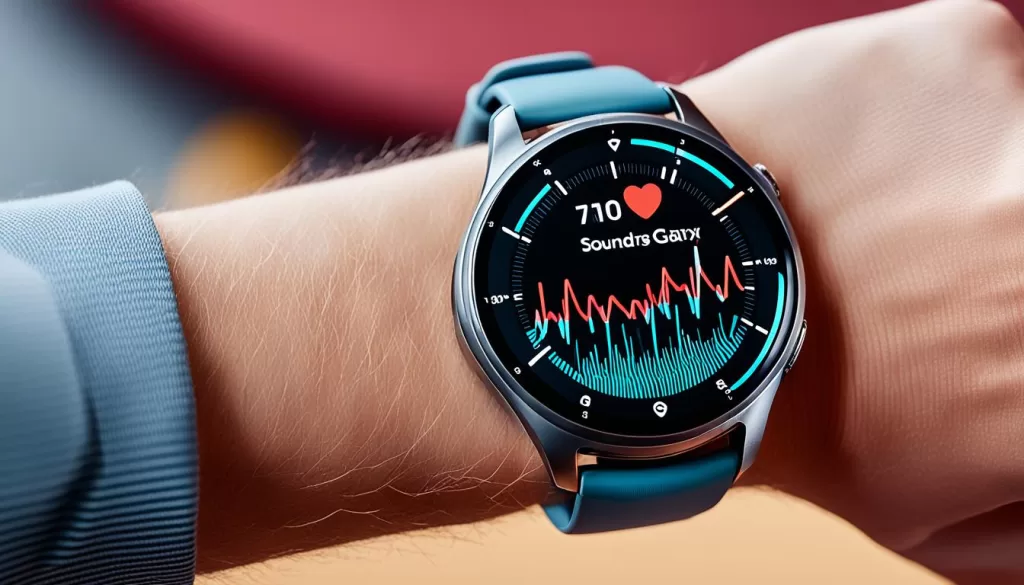
After completing the manual heart rate measurement, your Samsung Galaxy Watch 4 Classic will display the recorded heart rate. This information can be helpful for tracking your heart rate during specific activities or monitoring changes in your health over time.
By utilizing the manual heart rate measurement feature in the Samsung Health app, you can ensure accurate tracking of your heart rate on the Samsung Galaxy Watch 4 Classic. Whether you prefer the convenience of automatic heart rate monitoring or the control of manual measurement, the Samsung Galaxy Watch 4 Classic has the features to support your health and fitness goals.
Checking Heart Rate Trends on the Samsung Galaxy Watch 4 Classic
If you’re concerned about the accuracy of your heart rate monitoring on the Samsung Galaxy Watch 4 Classic, you can track heart rate trends over time to gain more insights into your health. The watch provides a convenient way to view your heart rate data and spot any potential irregularities or changes.
To access the heart rate trends feature, you can either open the Samsung Health app on your smartphone or use the heart rate widget directly on the watch. Both options allow you to view a comprehensive summary of your past heart rate measurements.
By reviewing your heart rate trends, you can identify any patterns or changes in your heart rate that may require further attention or medical advice. This feature enhances your ability to monitor your cardiovascular health conveniently and effectively.
Make it a habit to regularly check your heart rate trends to ensure that your heart rate monitoring is accurate and in line with your health goals. By staying informed about your heart rate patterns, you can make better decisions regarding your fitness and overall well-being.
Keeping Your Samsung Galaxy Watch 4 Classic in Top Shape
To ensure optimal performance of your Samsung Galaxy Watch 4 Classic and maintain accurate heart rate monitoring, there are a few key steps you can take. These will help you make the most out of your smartwatch and keep it running smoothly.
Maintaining Watch Performance
Regular maintenance is essential for keeping your Samsung Galaxy Watch 4 Classic functioning at its best. Make sure you keep your watch updated with the latest software updates. These updates often include bug fixes and performance improvements that can help address any heart rate monitoring issues you may be experiencing. Additionally, it’s important to keep your watch clean. Wipe down the screen and the sensors regularly with a soft, lint-free cloth to remove any dirt or sweat that may affect the accuracy of the heart rate monitoring feature.
Managing Tiles or Widgets
Customizing your Samsung Galaxy Watch 4 Classic by managing the tiles or widgets is another way to optimize its performance. Remove any unused tiles or widgets from your watch face to declutter the interface and improve responsiveness. By keeping only the tiles or widgets that you frequently use, you can streamline your experience and make navigating your watch easier.
Contacting Support
If you have followed all the troubleshooting steps and tips mentioned throughout this article and are still experiencing heart rate monitoring issues on your Samsung Galaxy Watch 4 Classic, it may be time to reach out to support. Contact Samsung’s customer support for further assistance and guidance. They will be able to provide you with specific solutions tailored to your situation and help you resolve any lingering issues you may be facing.
